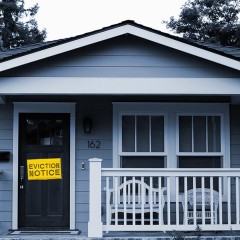Earlier in the pandemic, the city and county operated separate programs to administer funds from the CARES Act and had received feedback that running two different systems created confusion.
“As soon as we knew we had this opportunity, we called the city and said, ‘Hey, do you want to work together?’” said Barton, managing director of strategic initiatives with Harris County.
Within weeks, a joint program was up and running.
Combining their funds and developing a single platform to administer the federal Emergency Rental Assistance (ERA) program allowed the City of Houston and Harris County to get help to families faster and more effectively than other jurisdictions around the state, according to a new report from Texas Housers, an advocacy group that supports low-income residents.
“They were able to meet the moment and protect renters in crisis because they were prepared,” said Erin Hahn, a research analyst at Texas Housers who authored the report, which analyzes the performance of 10 ERA programs out of 37 across the state.
The report notes several factors that led to the city and county’s success:
- Rental and census data were used to target neighborhoods where evictions were high and program applications were low.
- Duplications of effort and benefits were reduced by operating a single program.
- Existing relationships with neighborhood nonprofits helped put the word out through events and other outreach strategies.
- Existing rental assistance infrastructure and pools of applicants were recycled. Renters who had applied for CARES funding but did not receive it before the funds ran out were able to update their applications and given distribution priority.
- Houston-area residents were already familiar with navigating social programs, including Hurricane Harvey relief.
Houston and Harris County received $301.4 million and were able to assist 66,551 households by June 2022. Because they met federal spending deadlines, they received more than $30 million in additional funding.
“This was such an unusual moment and I don't think people have fully internalized just how amazing it was to have $300 million available,” Barton said. “Generally, there are small pockets of rental assistance that are always available through various disaster recovery funds or emergency services grants or philanthropy, but that scale is just unprecedented.”
Even so, the funding wasn’t enough to help all the households who continue to need assistance.
The ERA program, combined with other pandemic-era measures, kept eviction rates moderately stable in many parts of the state, Hahn said. Yet rates are again on the rise, especially as inflation and rising rents further strain people’s finances.
“The pandemic started a huge national conversation about eviction prevention, and it showed that these measures can work when we invest in them.”
“The pandemic started a huge national conversation about eviction prevention, and it showed that these measures can work when we invest in them,” Hahn said. “So we’re encouraging both local governments and the federal government to keep up the momentum and continue to prioritize rental stability.”
In Harris County, the number of weekly evictions fell dramatically as a result of the rental assistance, Barton said. But the lower numbers didn’t last.
“It’s now back up to or greater than pre-pandemic levels — so the need is still there,” she said, citing eviction data for the county. (Almost 147,000 cases have been filed as of Dec. 20.)
The U.S. The Department of the Treasury launched the $25 billion ERA program in early January 2021 to assist households that were unable to pay rent and utilities due to the COVID-19 pandemic.
The funds were reserved for renters with household incomes at or below 80% of the area median — and jurisdictions had to spend a certain percentage of their award every quarter or be at risk of having a portion of their funds recaptured and reallocated.
In Texas, larger cities and counties distributed their funding faster than in other parts of the state. A number of smaller jurisdictions that didn’t have experience administering aid failed to meet federal spending deadlines and lost funding, according to the Texas Housers report. Cameron County, Hays County, Hidalgo County and the city of Laredo lost more than $17 million to recapture by the federal government.
Houston and Harris County had partnered before on a number of projects, but never to this degree, said Melody Barr, deputy assistant director of public services for the city of Houston.
At one point, the joint program was distributing an average of $7 million per week, said Barr, Barton’s counterpart at the city.
“We were very intentional about helping individuals stay housed because we know that our homeless system is already oversubscribed,” she said. “There is a waitlist for every housing model out there.”
Nancy Sarnoff is a contributing writer for the Urban Edge.


